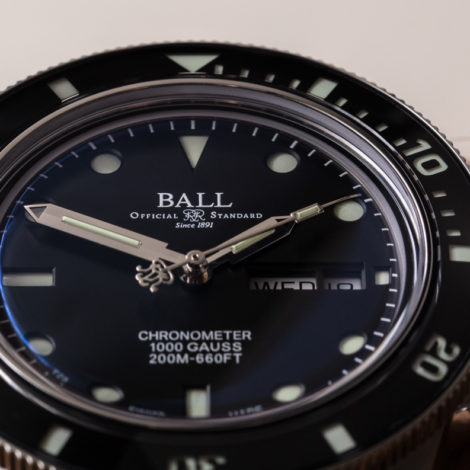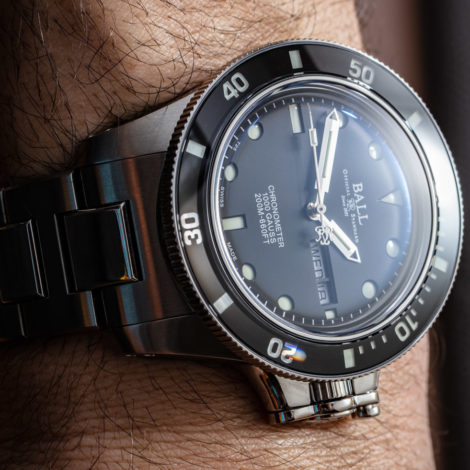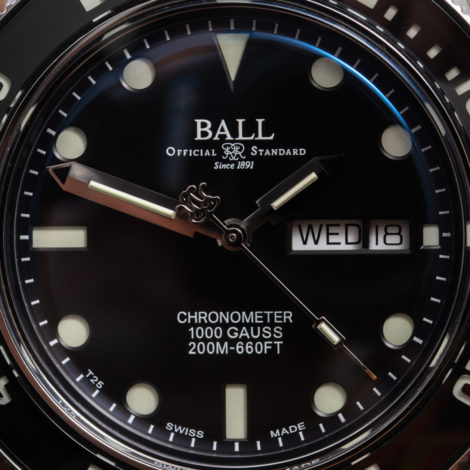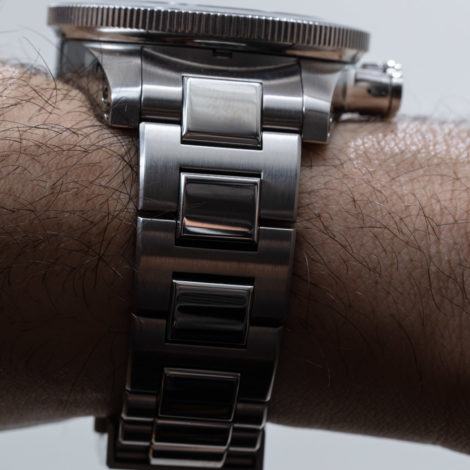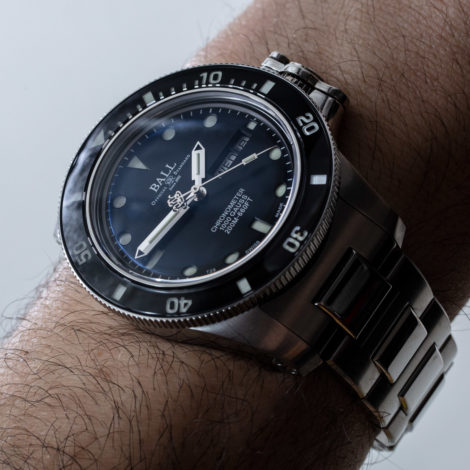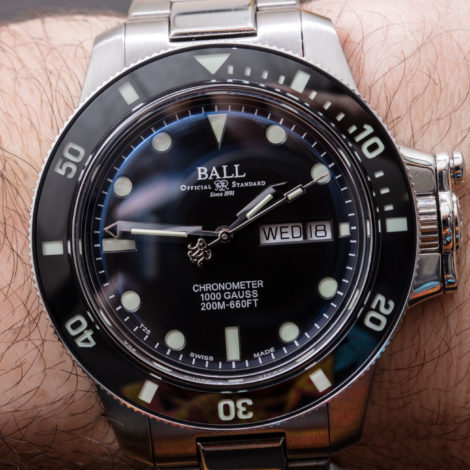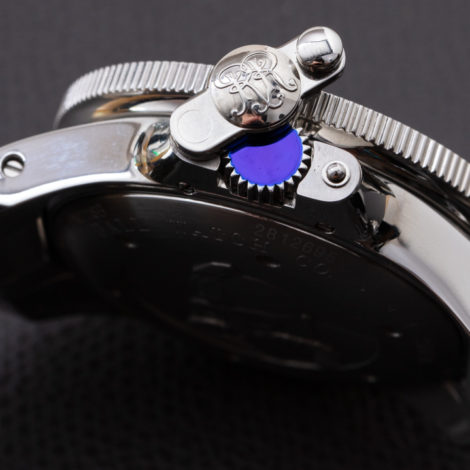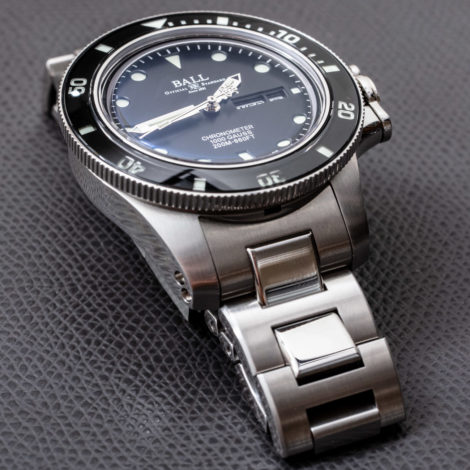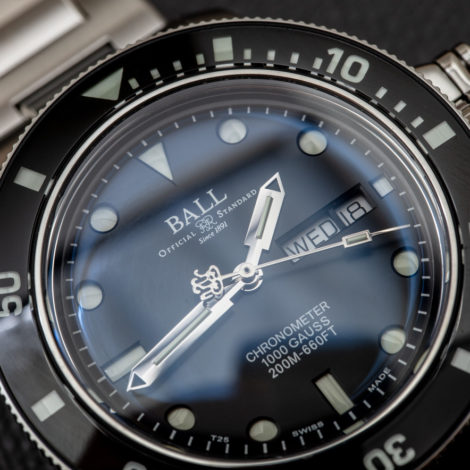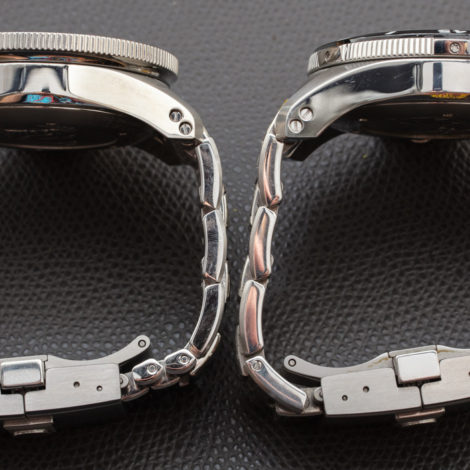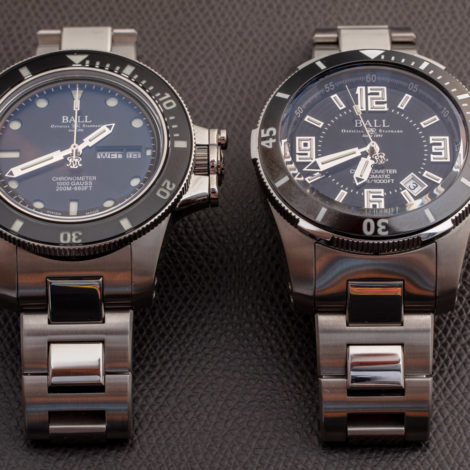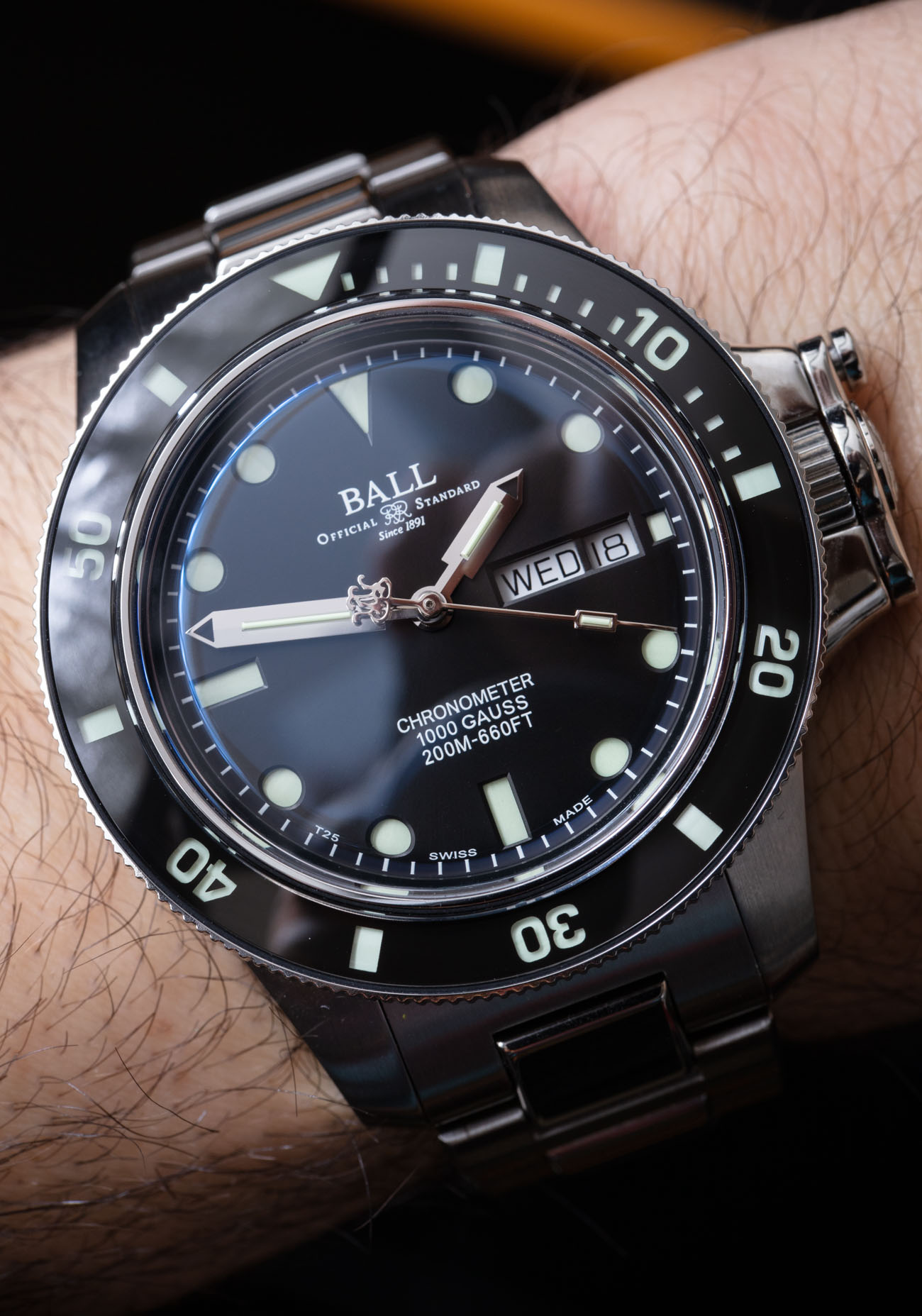
This is not the first Engineer Hydrocarbon watch Ball has produced, but they do call it the “Original.” After a few years not covering a Ball Engineer Hydrocarbon timepiece, I am now happy to check out the fresh Ball Engineer Hydrocarbon Original. Not only is the reference DM2118B-SCJ-BK Ball Engineer Hydrocarbon Original a good-looking timepiece, but it also incorporates a lot of desirable technology, both inside out and. While the “Original” is not overpriced, it is not a budget timepiece and understanding where its value comes from requires a bit of study.
With the Hydrocarbon Original, Ball is able to overcome one of the most common requests its consumers have had, and that is to make a dial that uses tritium gas tubes for luminant but that has the more elegant look that comes without having a plethora of small tubes on the dial. When it comes to the tactical, modern look, tritium gas tubes are welcome. That said, few watches with gas tubes on the dial look “classic.”
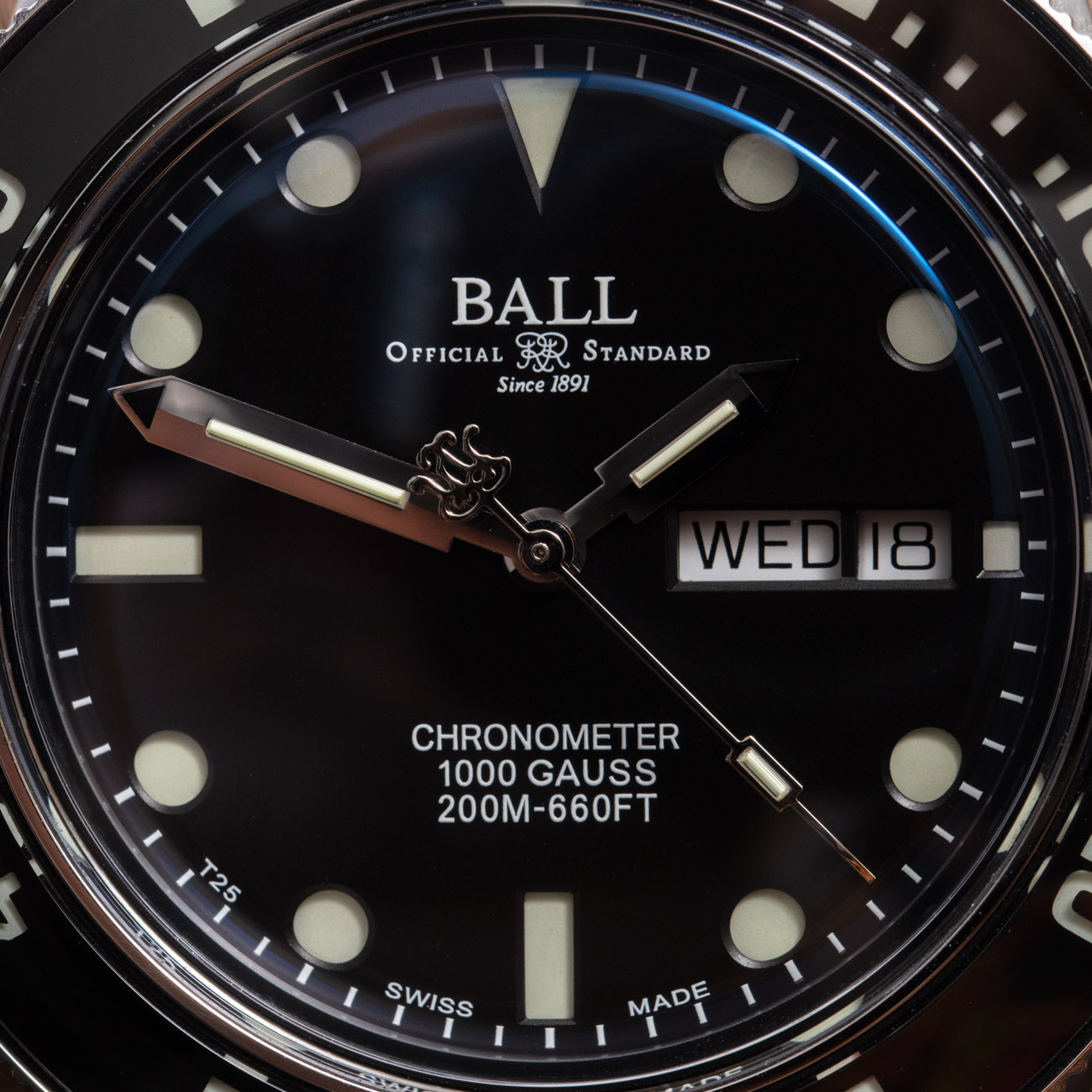
That is all changing, as watches are now starting to use flatter (versus cylindrical) tubes, and overall the watch dial and bezel uses about 30 of them. These flat tubes can be used in multiple ways, and here Ball manages to create a Submariner-style dial with a sandwich effect. Basically, there is a top black dial with holes in it for the hour markers that sits on top of a layer of flat tritium gas tubes. These hour-marker windows can be whatever shape they want with a glowing tube right underneath them. The outcome is fantastic, and this is one of the best looking Ball Hydrocarbon watches yet.
We see the same effect on the rotating diver’s style bezel — with the tritium gas tubes under a ring with the minute markers in it. Over the bezel is a sapphire crystal, which makes Ball one of the few (and desirable) sports watches that have a sapphire crystal over the dial as well as over the bezel. This is more expensive but also more desirable than ceramic (and sapphire is a bit more scratch resistant, to boot). My compliments to Ball on the mastery of the rotating bezel action (very smooth with nice-sounding clicks).

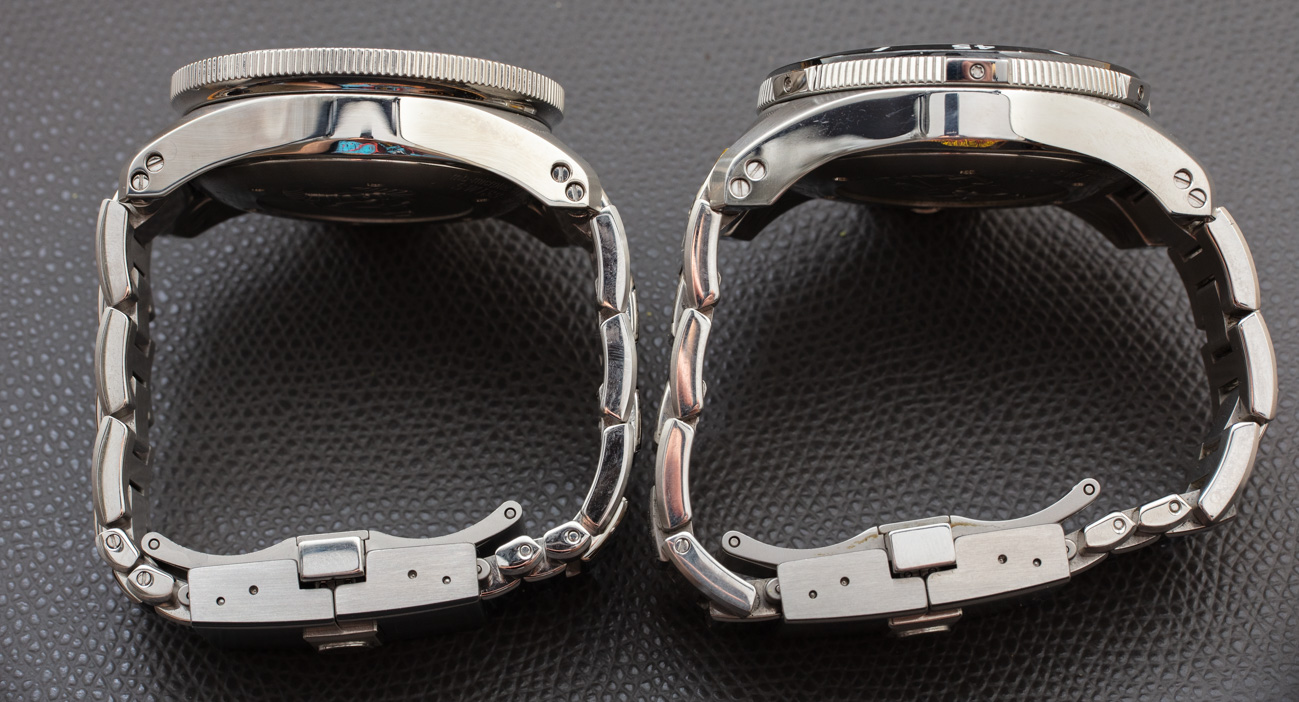
The Engineer Hydrocarbon case has aged well, but what I’ve discovered is that Ball has been quietly updating and improving the cases over time. For example, I compared the Hydrocarbon Original to the Ball Engineer Hydrocarbon Ceramic XV (aBlogtoWatch review here) from about eight years ago, and the case is entirely different even though it has a similar form. I really admire Ball for following some of the great brands in iteratively improving upon a core theme. The case is of excellent quality in stainless steel with brushed and polished surfaces. It is water resistant to 200 meters, which seems low given than many other Ball diver’s watches are water resistant to 300 meters. It doesn’t matter too much, but I found that fact to be a bit curious.
What is also curious is why Ball is saying that the Ball Engineer Hydrocarbon Original watch is 40mm-wide. It might be from the rear of the watch, but the bezel is about 42mm wide, which is how I measure a watch case size. The case is also a hefty 14.55mm-thick and has a wearable approx. 51mm lug-to-lug distance. Ball hasn’t messed with the distinctive crown guard system. The locking clasp that folds down over the crown is meant to ensure that the user screws the crown back in all the way.
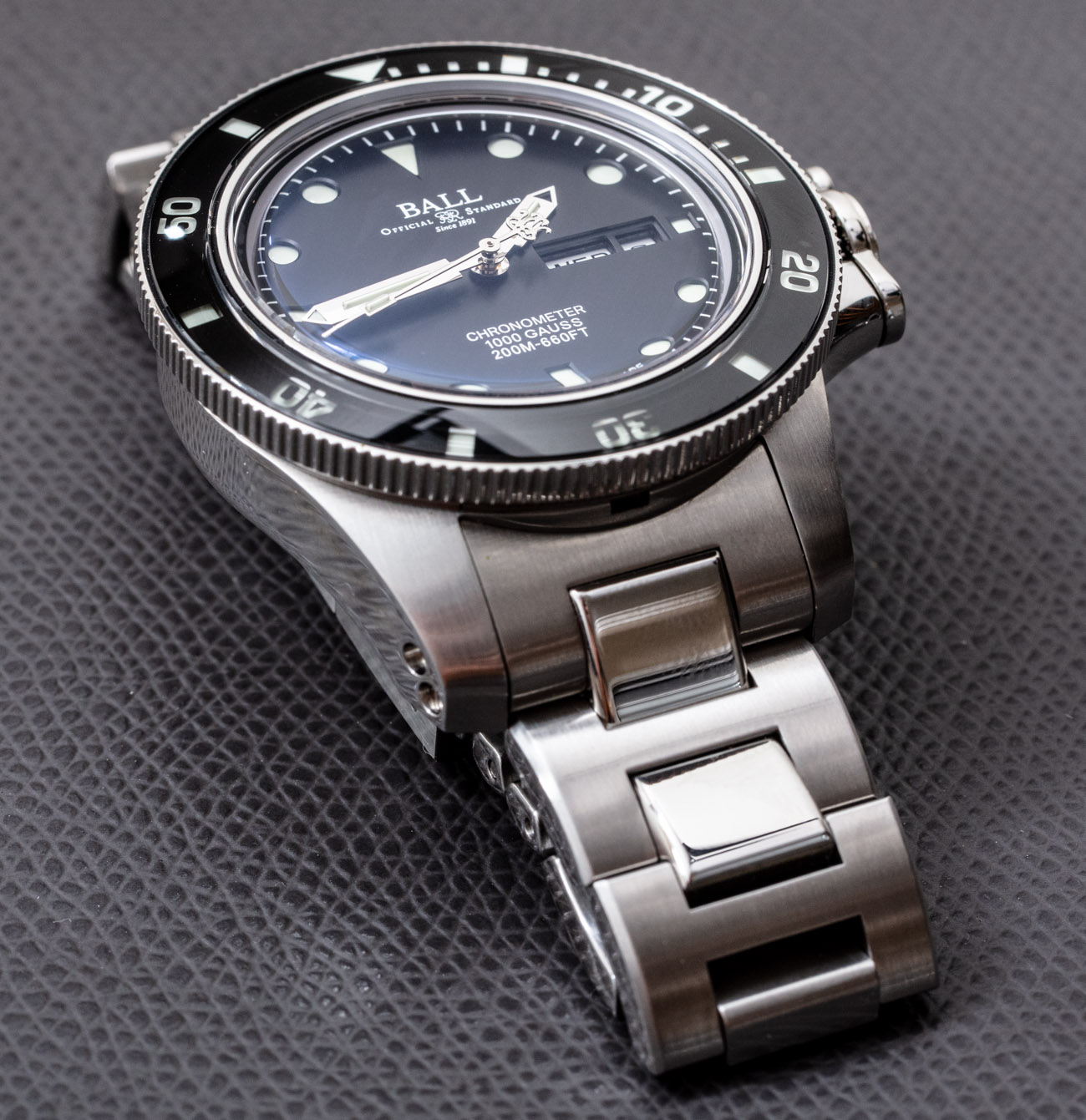
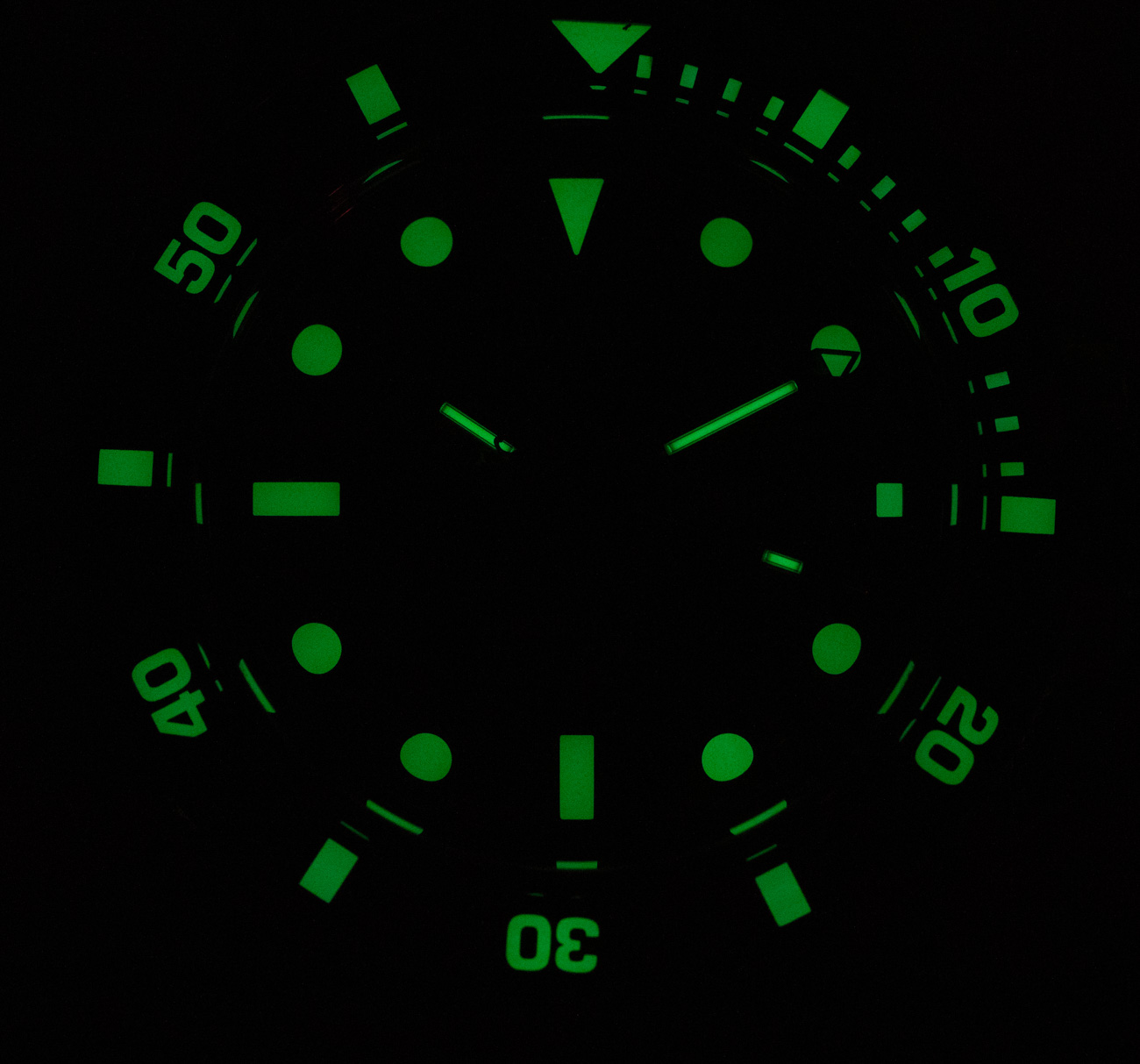
The watch has a lot more durability features than mere water resistance. Next is the anti-magnetic shielding, which gives it resistance of up to 1,000 Gauss. Then, you have a series of anti-shock systems that include Ball Amortiser, SpringSEAL, and SpringLOCK. I will spend a moment on the latter features and the others, in a nutshell, are either designed to protect the movement from breaking if subject to shock, or prevent the movement from having rate-error problems as a result of shock or vibration.
Some of the above features are part of the case, but things like SpringLOCK are modifications to the movement itself. SpringLOCK was created for Ball when Philippe Antille worked for the brand. Most of these other inventions are from his mind, too, I believe. SpringLOCK is actually a small cage that is inserted around the balance spring on the mechanical movement. The case reduces the distance the spring can go if strained by shock and gravity. The more distance the spring travels, the more of an error to the rate result there will be. This occurs if the watch is dropped, but more importantly if it was subjected to shock. Antille tested SpringLOCK on in action on the wrist of KISS’s drummer Eric Singer during a concept. A hardcore watch-lover and collector, Springer was more than obliged to cooperate. I recall speaking to Mr. Antille after the test to ask him how the watch performed. The idea was to test the time before the concert and see if the watch had deviated in its accuracy during the concert while it was on a drummer’s wrist. Philippe smiled with glee and shared, “It works!”

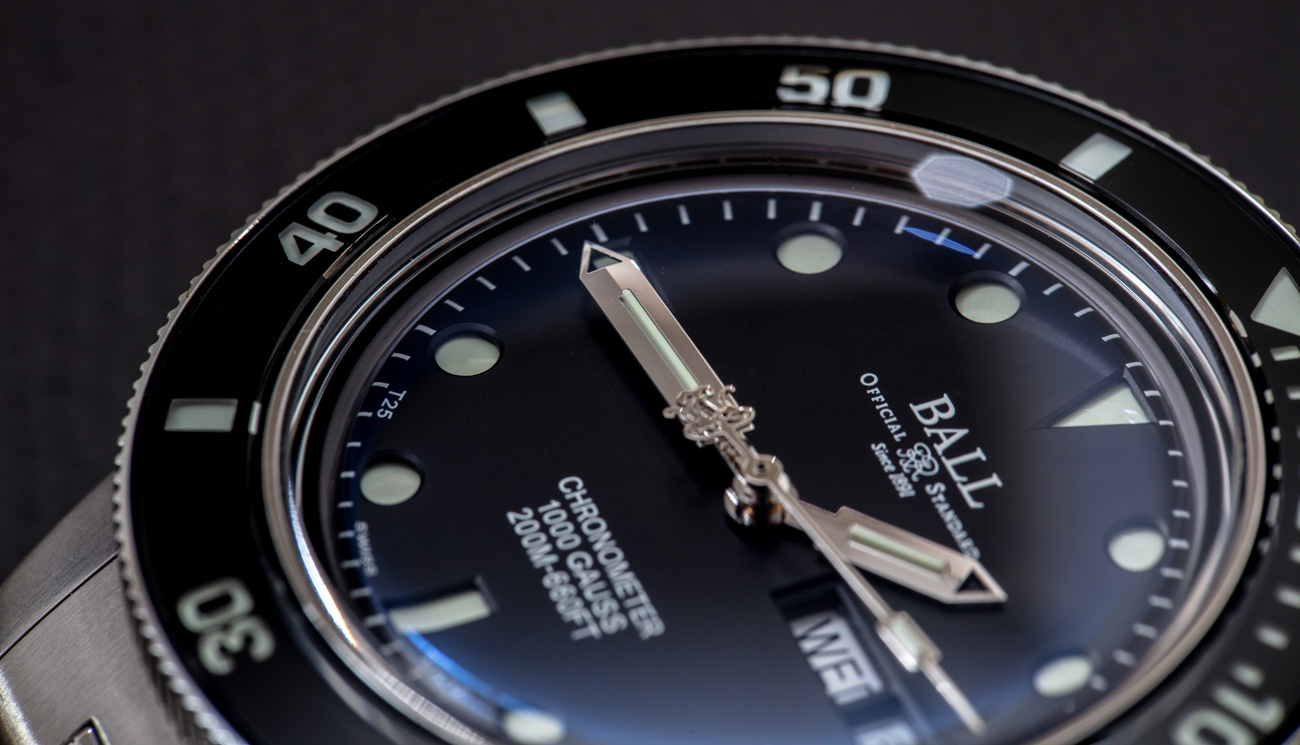
The based movement used for the Engineer Hydrocarbon Original is a Swiss ETA 2836, but it is heavily modified, as I mentioned, and Ball is calling it their caliber BALL RR1102-CSL. Functions include the time and calendar with day and date indicators. The movement operates at 4Hz with about two days of power reserve. An additional added value to the movement is that Ball has them COSC Chronometer-certified (for accuracy and performance) in each of the Hydrocarbon Original watches.
What hasn’t changed over the last several years in the Engineer Hydrocarbon collection is the bracelet and deployant clasp. This isn’t a bad thing, per se, but after all these years I had wanted Ball to experiment with more ability to micro-adjust the bracelet. While it is entirely dependent on your anatomy, I find the bracelet to be either a tad too small or too large, despite the fact that Ball includes half-links on the bracelet. I still wear and enjoy the watches and love the bracelet but lament that, unlike with some other watches, I don’t get a perfect fit on my own wrist.

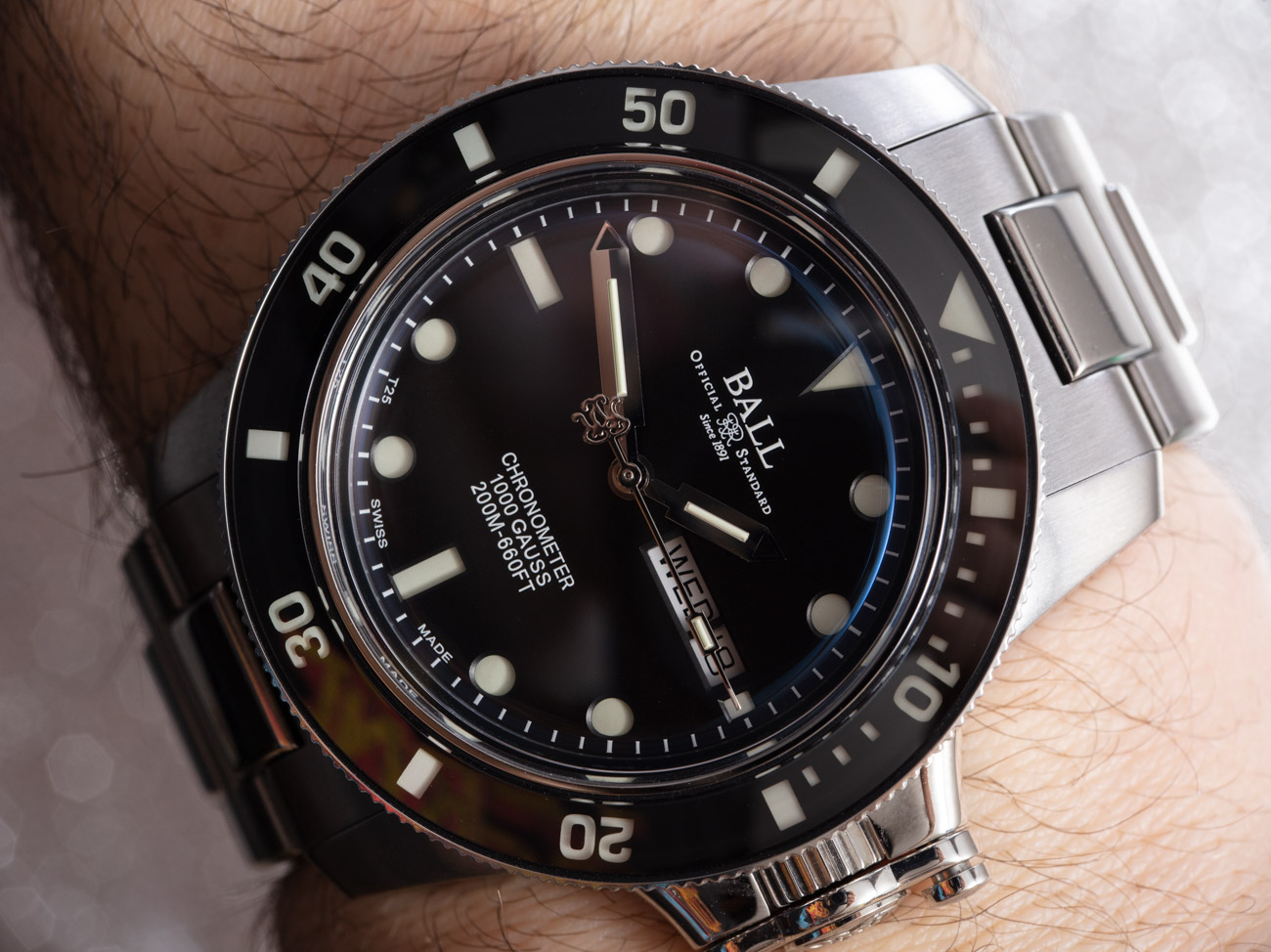
The steel bracelet uses double screws to attach to the case and is generally very attractive looking. Ball uses its own proprietary butterfly-style deployant that is nice and chunky, but also rather simple. Each end of the deployant has its own small diver’s-style extension, which might come in useful once in a while.
With a ton of features, some best-in-class execution for some elements, and a distinctive and refined design, the Ball Hydrocarbon Engineer collection has never been more relevant, and the Engineer Hydrocarbon Original is one of the most compelling choices from the longstanding Ball watch collection. Price for the reference DM2118B-SCJ-BK Ball Engineer Hydrocarbon Original is $3,199 USD. Learn more at the Ball website here.
Necessary Data
>Brand: Ball
>Model: Engineer Hydrocarbon Original reference M2118B-SCJ-BK
>Price: $3,199 USD
>Size: 42mm-wide, 14.55mm-tall, ~51mm lug-to-lug distance.
>When reviewer would personally wear it: Slightly eccentric daily wear tool watch for people who like features and some fun.
>Friend we’d recommend it to first: Mid-career watch collector interested in a timepiece they can truly tug around the world but that won’t raise any of the wrong eyebrows. Someone who doesn’t mind something seemingly underrated.
>Best characteristic of watch: Ball has steadfastly continued to improve its Engineer Hydrocarbon collection for years, and it shows. Overall built quality is top-notch. Bezel and dial with sandwich-style tritium gas tube illumination is well done and makes for a great visual effect. Modifications to movement truly do add value.
>Worst characteristic of watch: Bracelet is well made but doesn’t work as ideally as possible on my particular anatomy. Crown protection system has been around long enough that Ball might want to update it as well.


